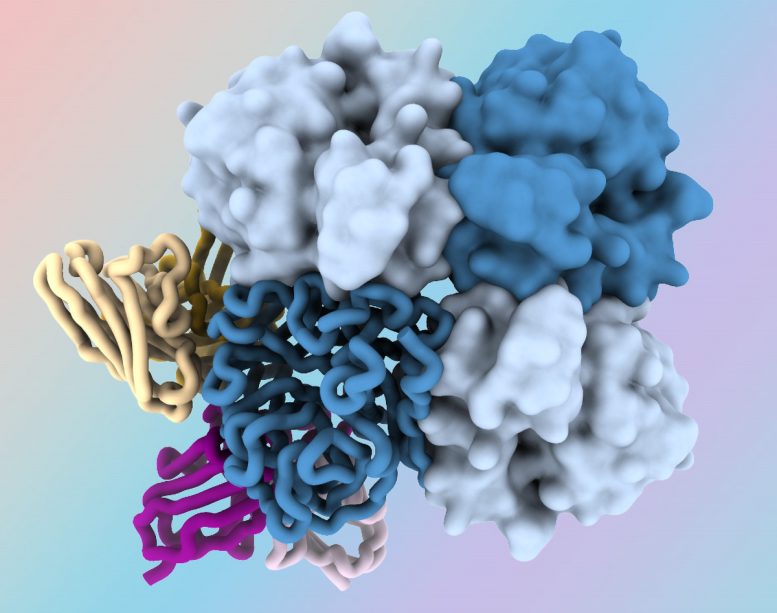
Scientists at the National Institutes of Health have discovered antibodies that attack a difficult-to-detect area of the influenza virus, shedding light on the relatively unexplored “dark side” of the neuraminidase (NA) protein head. The antibodies target a region of the NA protein that is common among many influenza viruses, including H3N2 subtype viruses, and could be a new target for countermeasures. The research, led by scientists at the National Institute of Allergy and Infectious Diseases’ Vaccine Research Center, part of NIH, was recently published in the journal Immunity.
Influenza, or flu, sickens millions of people across the globe each year and can lead to severe illness and death. While vaccination against influenza reduces the burden of the disease, updated vaccines are needed each season to provide protection against the many strains and subtypes of the rapidly evolving virus. Vaccines that provide protection against a broad range of influenza viruses could prevent outbreaks of new and reemerging flu viruses without the need for yearly vaccine reformulation or vaccinations.
Discovering New Targets for Influenza Countermeasures
One way to improve influenza vaccines and other countermeasures is to identify new targets on the virus’s surface proteins in “conserved” regions—portions that tend to be relatively unchanged between different strains of the virus. Influenza NA is a surface protein containing a globular head portion and a narrow stalk portion.
The underside of the NA head contains a highly conserved region with targets for antibodies—known as epitopes—that make it vulnerable to antibody binding and inhibition of the virus, as well as not being impacted by mutations common in drug-resistant strains. This region is termed the “dark side” due to its partially hidden location and relatively unexplored characteristics.
Antibody Discovery and Potential Applications
The researchers isolated human antibodies that target the NA dark side from the blood of two people who had recovered from influenza type A subtype H3N2, a major subtype of seasonal flu viruses. In lab tests, the antibodies inhibited the propagation of viruses from subtype H2N2, the subtype that caused pandemic influenza in 1957-58, and H3N2 viruses from humans, swine, and birds.
The antibodies also protected mice from lethal infection by a subtype H3N2 virus when given to the animals either one day before or two days after infection, showing that the antibody may treat and prevent influenza in this model.
The scientists analyzed the structure of two of the antibodies while bound to NA using advanced microscopy techniques known as cryogenic electron microscopy. Each antibody targeted different, nonoverlapping regions of the dark side, demonstrating that this region has multiple areas that may be useful to explore for countermeasure development.
These findings show that the NA dark side has unique, previously untapped epitopes that could be applied to the development of new vaccine and therapeutic strategies. They suggest that antibodies targeting the NA dark side could be useful in combination with antivirals or other types of antibodies for interventions against influenza, as they are effective against influenza viruses with drug-resistant mutations. The researchers also note that NA dark side targets could be included in the next generation of broadly protective vaccines against influenza.
Reference: “Protective human monoclonal antibodies target conserved sites of vulnerability on the underside of influenza virus neuraminidase” by Julia Lederhofer, Yaroslav Tsybovsky, Lam Nguyen, Julie E. Raab, Adrian Creanga, Tyler Stephens, Rebecca A. Gillespie, Hubza Z. Syeda, Brian E. Fisher, Michelle Skertic, Christina Yap, Andrew J. Schaub, Reda Rawi, Peter D. Kwong, Barney S. Graham, Adrian B. McDermott, Sarah F. Andrews, Neil P. King and Masaru Kanekiyo, 1 March 2024, Immunity.
DOI: 10.1016/j.immuni.2024.02.003
The study was funded by the National Institute of Allergy and Infectious Diseases.